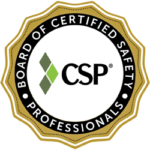Can roof leaks and ceiling water damage cause mold growth? How do you know if mold is growing on your ceiling? Learn how to identify and remove ceiling mold to prevent costly damage to your property here.
Roof leaks cause water damage which can result in more serious problems when mold, especially hidden mold, starts growing on your ceiling. Mold thrives in environments with a lot of moisture including around roof leaks and can spread throughout your home, causing various health problems and costly repairs.
Key Takeaways
- Your roof may already be leaking for a while before you see signs of water damage. Hidden mold may have also started growing and spreading into other areas in your home.
- Hire a certified mold testing and remediation company to inspect your home thoroughly for the presence of mold and ensure that all sources of mold are removed.
- Mold removal is a complex task that should be done by professionals especially if you are dealing with more than 10 square feet of mold infestation.

RPF Environmental can help you test for and assess the extent of mold infestation in your home as well as give recommendations on how to effectively remediate the problem. We offer mold testing in Massachusetts, New Hampshire, Maine, and across the country. Contact us now!
Causes of Leaks in Your Roof
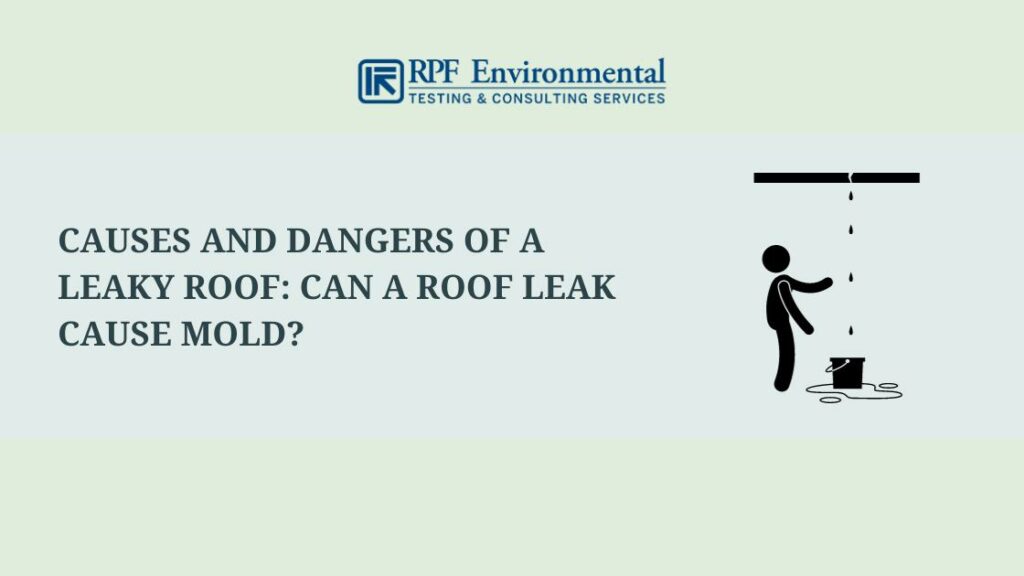
Among the common causes of leaks in your roof include the following:
- Breaking, curling, or cracking shingles due to aging
- Missing or broken shingles caused by rain and storms
- Cracked/damaged roof flashing
- Broken or clogged gutters that prevent rainwater from draining away
- Cracks in your chimney where water can seep through
- Improperly sealed or damaged roof vents
- Holes and fissures in your roof
- Condensation in your attic
- Leaky skylights
- Broken water lines in your attic
Dangers of a Leaky Roof: Can a Roof Leak Cause Mold?
Aside from structural damage, leaky roofs create an ideal environment for mold to grow within just 24 hours. The situation becomes even more dangerous when you can’t see visible signs of mold growth in your home despite it already causing serious damage. Hidden mold may have already been growing between your roof and ceiling before you realize its presence.
In addition, leaking roofs can damage your drywall, insulation, electrical fixtures, and ceiling joists. Mold can spread to your walls, flooring, and carpets and can lead to expensive repairs. Your ceiling might even fall as the overall weight adds up. Moreover, leaky roofs can present a fire hazard when the water finds its way to faulty wiring.
Health Effects of Mold Growth
Mold will continue to multiply and produce spores that can cause serious health issues. It can spread through your HVAC system and contaminate indoor air.
According to the CDC, touching or inhaling mold spores can cause severe reactions, especially in immunocompromised individuals. It can cause:
- A stuffy nose
- Wheezing or coughing
- Sore throat
- Burning eyes
- Skin rash
- Lung infection
- Asthma attacks
Other symptoms of mold allergy include shortness of breath, chest tightness, sneezing, runny nose, and chronic fatigue.
Ceiling Water Damage & Mold Symptoms: How Can You Tell if Mold Is Growing On Your Ceiling?
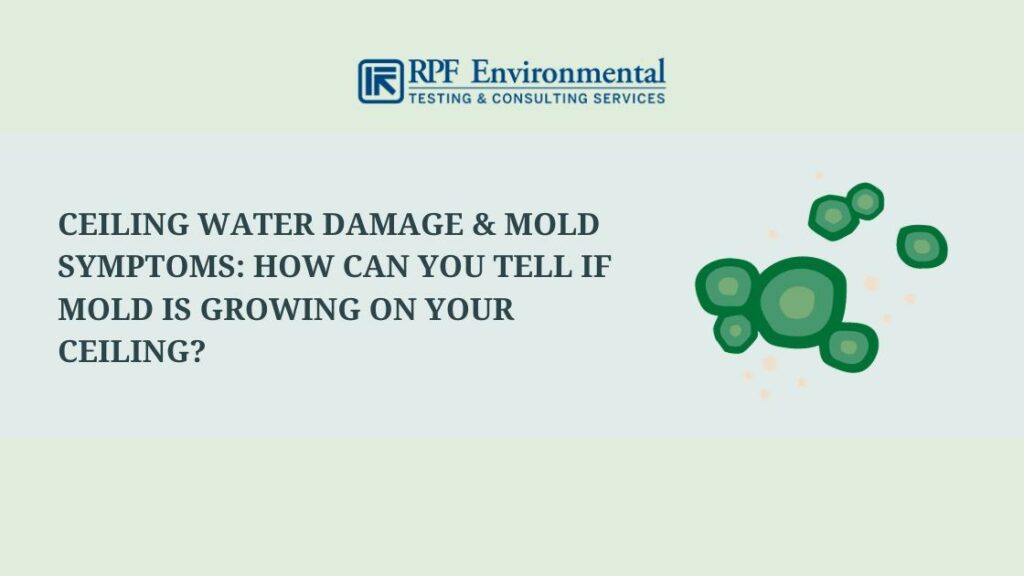
To spot water damage and mold infestation in your ceiling, below are signs you can look for:
- Discolorations on your ceiling (mold mostly appears in black and green shades but can come in brown, blue, or pink colors)
- Musty odor (worse infestations smell pungent) coming from your attic
- You are experiencing symptoms of mold exposure
- Cracking, warping, or bubbling paint
- Lumpy attic insulation
- Damp surfaces inside your home
- The sound of rushing or trickling water coming from your ceiling and/or walls
You may also see water dripping from your ceiling when the leak is severe, especially during heavy rains or snowfalls.
Also Read:
Water Damage vs. Mold
The main difference between water damage and mold is their smell. Mold will smell musty or something rotten while water damage that has been fixed won’t usually have an odor. Another major difference is their texture. Mold is damp and slimy while water damage often only causes bubbling surfaces. Moreover, mold will grow within 24-48 hours after a leak or water damage. Thus, drying damp materials within this time range can prevent mold growth.
How to Fix Ceiling Water Damage Mold: What to Do if You Have a Ceiling Water Leak and Suspect That Mold Is Growing in Your Building?
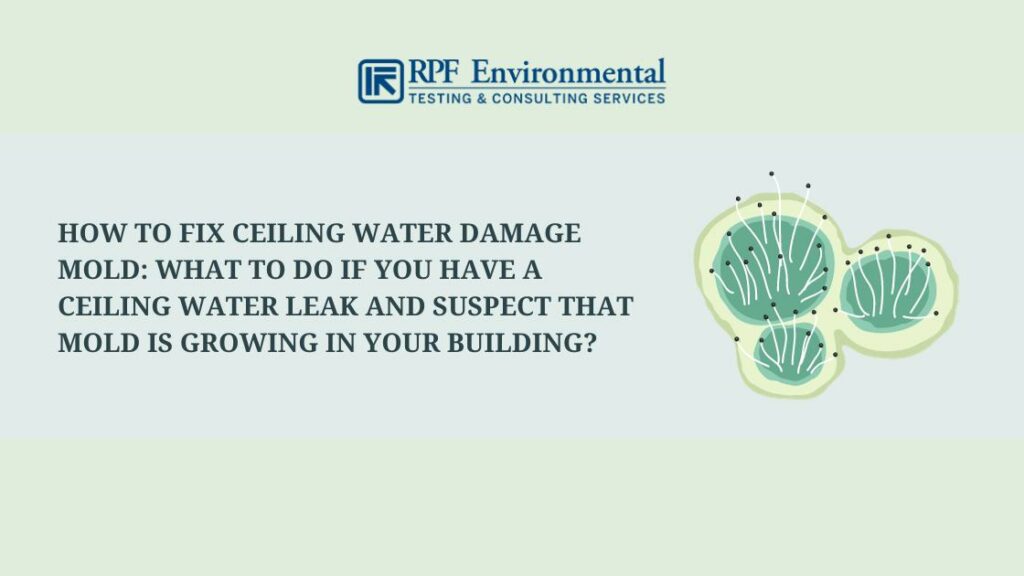
The first thing you need to do is to hire a professional to inspect your attic and ceiling for water damage and mold. Certified mold testing and remediation professionals can find sources of mold growth such as leaks, assess the extent of the infestation, and advise you on the best course of action. This includes the needed repairs and whether you need professional mold remediation. Thus, ensuring the complete removal of mold in your building.
For minor leaks, water damage, and mold infestations (less than about 10 square feet), you can handle them yourself by following these guidelines:
- Find the source of the leak, assess the damage, and thoroughly inspect your property for mold growth. Don’t forget to check your attic and other nearby areas.
- Avoid breathing in mold spores and exposing yourself by wearing an N-95 respirator, long gloves, and goggles.
- Fix and repair sources of water leaks. You might want to call a roofing specialist for this. Fixing the root cause of water damage and mold growth will make sure that you completely get rid of the problem.
- Make sure to seal off the work area and put down plastic sheeting to protect your floor before you start removing mold.
- Scrub off mold from hard surfaces using soapy water or a bleach solution (mix 1 gallon of water with no more than 1 cup of laundry bleach). Make sure to wear protective gear.
- You may have to throw away mold ceiling tiles and other porous or absorbent materials. Mold can continue growing on porous materials and are difficult to remove completely.
- Ventilate and dry the area completely and monitor for a few weeks to ensure that mold won’t return.
When the leak has already caused significant damage, you might need to replace your roof and other mold-infested materials that are difficult to clean. This will need the help of a professional mold remediation company to make sure that mold won’t come back. Also, disturbing mold will release airborne spores that might travel throughout your home and can be breathed in. Always consult a professional if you are not sure how to clean mold-infested materials.
Also Read:
Water Damage & Mold Growth Prevention Tips
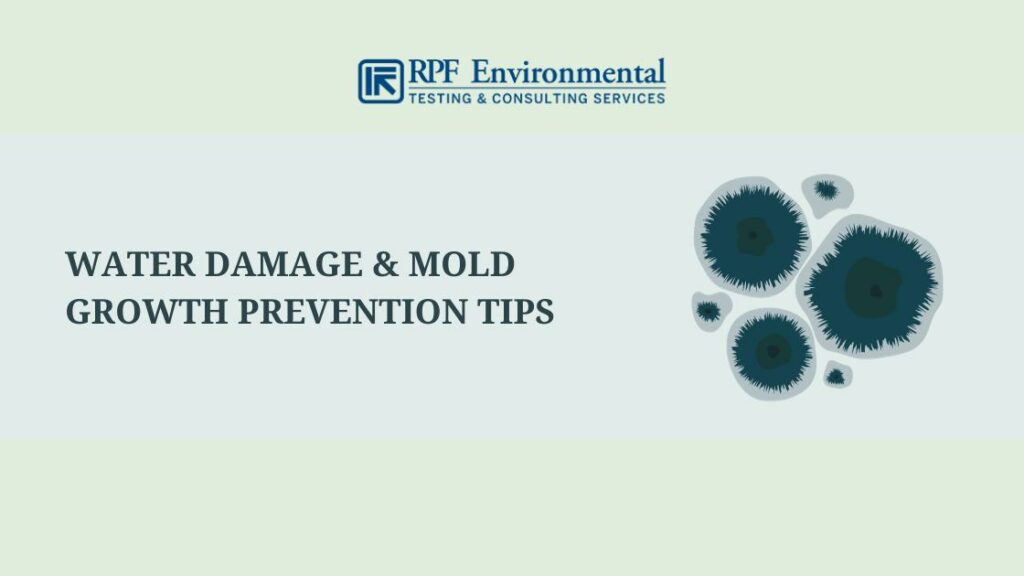
Below are a few recommendations from the CDC and EPA on how to effectively prevent water damage and mold in homes and buildings:
- Fix leaks in your roof, plumbing, and walls immediately.
- Clean and dry out wet materials in your home within 24-48 hours.
- Regularly clean and repair your roof gutters.
- Remove obstructions in your drain lines.
- Keep humidity levels low using a dehumidifier or air conditioner.
- Ensure enough ventilation in your home and vent exhaust fans and dryers outside.
Lastly, inspect your roof at least once a year for signs of damage. You can hire a professional roofer for this. Fix any damage and replace worn spots before the problem gets worse.
Also Read:
- Mold Fact: Does It Die When It Dries Out?
- Mold Testing & Detection Tips: How to Test for Mold in Your Air, Walls, or Basement Effectively
- 20 Common House Mold Types: Identification & Health Complications
FAQs
No, ceiling mold needs to be cleaned and removed for it to go away. Otherwise, it will spread to other areas in your home and cause significant structural damage and health complications.
Mold will start to grow on damp surfaces within 24-48 hours after water exposure. However, it will take days before you notice any visible signs of mold growth in your home.
The CDC recommends scrubbing off mold from hard surfaces using diluted bleach (1 cup of laundry bleach in 1 gallon of water) or soapy water. However, heavily infested ceiling tiles and porous materials might need to be removed and replaced.
Mild reactions to mold exposure include wheezing, coughing, itchy eyes, skin rash, and a stuffy nose. But, exposure to toxic mold can lead to severe allergic reactions, especially in sensitive individuals, and can even lead to asthma attacks and lung infections.
Mold on your ceiling will usually look like black or green spots but can also be white, pink, blue, or brown. They may have a fuzzy or powdery look and texture and are often slimy. This may indicate that mold is already growing between your roof and ceiling and needs immediate attention.
Conclusion
Leaks in your roof will not only cause water damage but also mold growth which can compromise the structural integrity of your house. Once the infestation gets worse, it can lead to various health complications and expensive repairs. It may also grow between your walls and other areas that can’t be seen. This requires professional mold testing and remediation to ensure that all sources of mold exposure are identified and removed.
RPF Environmental is a certified environmental testing company that offers professional mold testing and remediation services nationwide. Book a consultation now!



